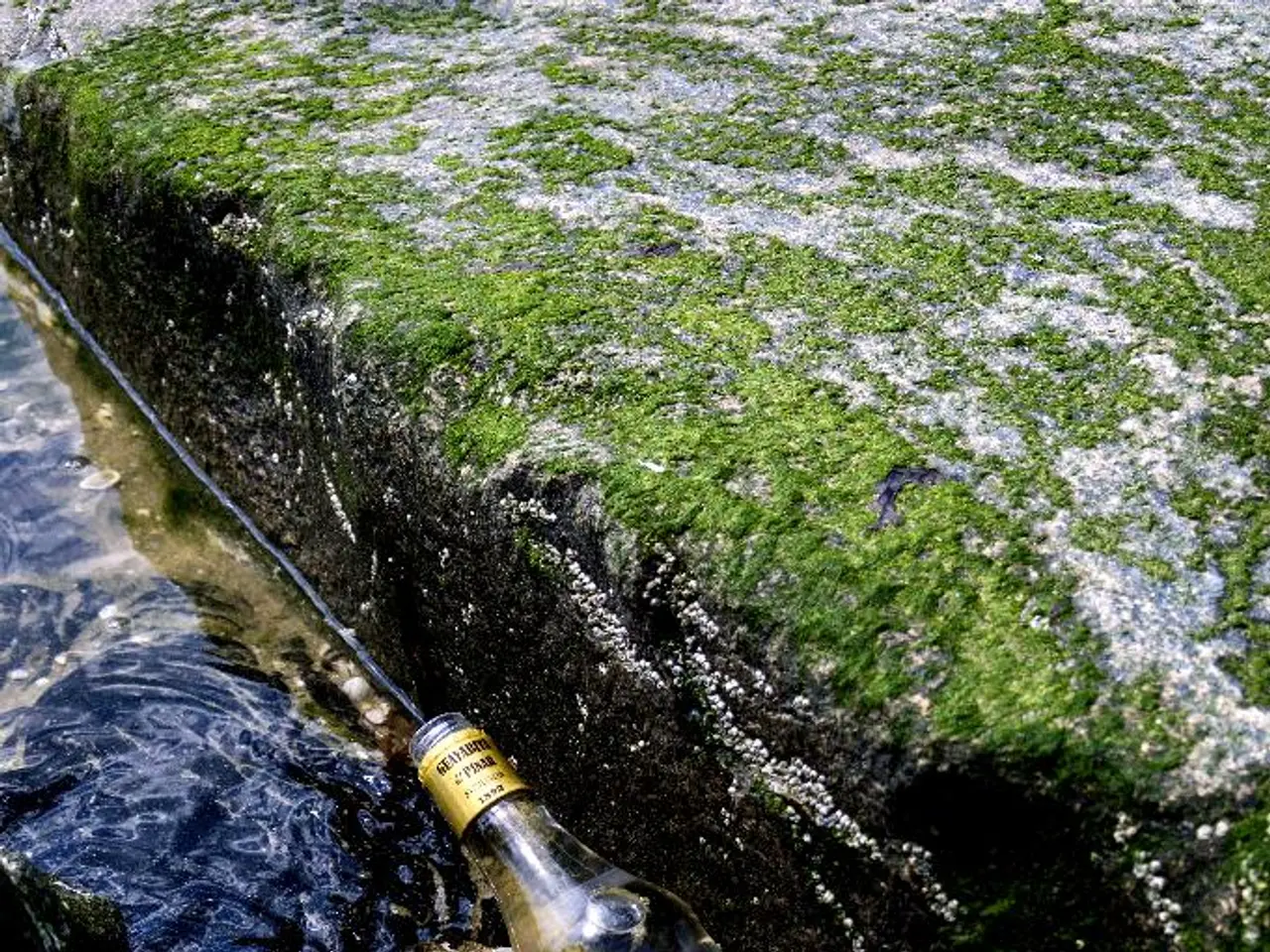Uncovering the Premium Purity: Oeko-Test Reveals Four Mineral Waters Fall Short
Unsatisfactory Quality of Four Mineral Waters Identified
Germans are increasingly opting for mineral water over beer. However, let's hope these pricier purchases are a healthier option. According to Oeko-Test, not all mineral waters can live up to their "originally pure" claims.
In the last 50 years, the per capita consumption of mineral and spring water in Germany has skyrocketed. With around 500 recognized mineral springs in the country, thirsty Germans have a vast selection of over 500 mineral waters, both carbonated and still, to choose from. These waters, originating from deep within the earth, have absorbed various minerals as rainwater passes through layers of rock.
Oeko-Test, the well-known product testing organization, put 53 still mineral waters to the test, selecting products from various regions and also including organic and formula-friendly options. The price range for these water bottles ranged from 0.19 to 1.23 euros per liter, a significant markup compared to the average price of tap water in Germany, which hovers around 0.3 to 0.5 cents per liter.
Contaminants Under Scrutiny
The Oeko-Test researchers examined all products in the lab for heavy metals, nitrate, chromium(VI), benzene, pesticide metabolites, sweeteners, PFAS, and trifluoroacetic acid (TFA) separately. Additionally, they conducted a microbiological analysis. infant and organic waters underwent extra testing for nitrite, fluoride, sulfate, sodium, and radionuclides but no findings warranted a negative assessment. The evaluation was based on the limits set by the Mineral and Table Water Ordinance, and mineral water labeled for infant formula has stricter legal requirements.
Troubling Findings
Unfortunately, many of the water tested could not live up to their "originally pure" claims. In total, 21 products contained potentially harmful substances like chromium(VI) or arsenic, which can be found naturally in the soil or from human-made sources like pesticides. The lab also discovered the PFAS compound TFA in many of the waters. TFA, one of the per- and polyfluoroalkyl substances (PFAS), often referred to as "forever chemicals," is considered a risk due to its persistence, reproductive toxicity, and mobility in the environment.
TFA was detected in several German waters, with seven already exceeding the maximum allowable amount of PFAS in drinking water for human consumption by EU member states, set to comply by January 12, 2026. Although the measured levels do not pose an immediate health risk, TFA is a cause for concern due to its longevity, reproductive toxicity, and its impact on the environment. Several German authorities recently classified TFA as very persistent, reproductive toxic, and very mobile in the environment.
The Bottom Line
Four mineral waters were labeled as "inadequate" due to contamination. Among these, "Gut & Günstig Natürliches Mineralwasser Still" from Edeka and "Naturalis Natürliches Mineralwasser Still" from Netto were among the losers. Their chromium and TFA levels were deemed unacceptable.
On a positive note, "K- Classic Natürliches Mineralwasser Still" from Kaufland and "Saskia Natürliches Mineralwasser Still" from Lidl earned the "very good" rating and are both available at an affordable 0.19 euros per liter.
(Originally published on June 26, 2025)
Source: ntv.de, awi
- Drinking Water
- Tests
- Safety
- Environment
- Regulations
- Oeko-Test
According to the current regulatory landscape, there is no EU-wide harmonized maximum allowable level of trifluoroacetic acid (TFA) in drinking water for human consumption. However, individual EU member states have set their own guidelines or indicative values:
- Germany (German Federal Environment Agency) has derived a health guideline value of 60 µg/l, but recommends achieving 10 µg/l or less of TFA in drinking water.
- The Netherlands (RIVM) has set an indicative drinking water value of 2.2 µg/l.
- Denmark has established a limit of 9 µg/l for TFA in drinking water.
In Austria, TFA has been detected in groundwater with an average concentration of 0.71 µg/l, all below or near these limits.
No specific mineral water brands have been publicly reported as exceeding TFA limits in EU countries. However, studies suggest a growing presence of TFA in water sources, which may pose potential risks for bottled mineral waters sourced from contaminated sites.
An EFSA toxicological review is expected in early 2026, which may lead to updated recommendations and standards.
- The absence of a EU-wide harmonized maximum allowable level of trifluoroacetic acid (TFA) in drinking water could create inconsistencies across member states, such as Germany, the Netherlands, and Denmark, which have established their own guidelines or values for TFA in drinking water.
- In light of the increasing presence of TFA in water sources, it is crucial for the science community and health-and-wellness organizations to collaborate and develop nutritional guidelines to ensure the safety of small and medium-sized undertakings, including bottled mineral waters, for the well-being of consumers.




